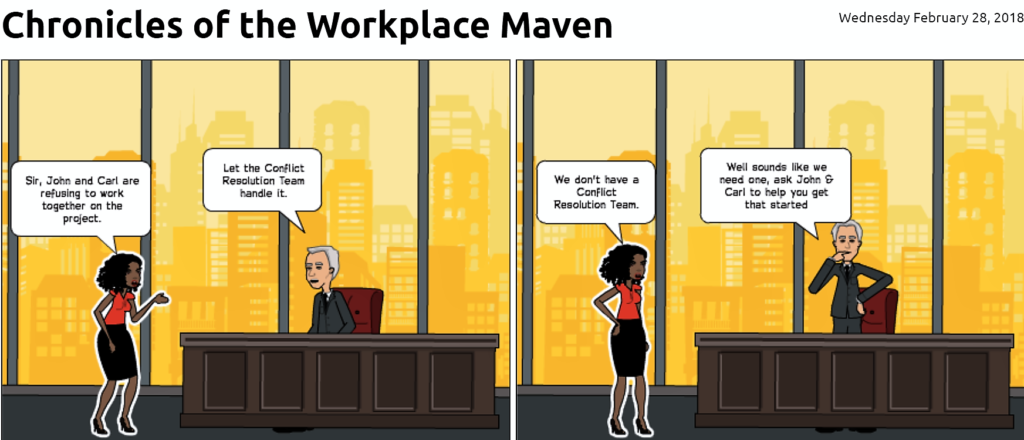Mary will only talk to Nancy through passive-aggressive emails; John and Carl constantly battle over the most trivial details; No one in the office wants to be around either of them because the tension is palpable. Conflict in the workplace is inevitable – but just because it’s inevitable doesn’t mean it should be ignored. Failure to acknowledge and/or address workplace conflict will impact your employees’ as well as overall productivity, and can lead to unhealthy confrontations. Here are 8 steps to follow to strategically tackle workplace conflict.
1. Define the business problem
Is there loss of productivity due to those in conflict refusing to work together? Are projects and initiatives failing due to poor communication? Is there a hostile work environment that may lead to future litigation? It’s not about getting people to like each other, the purpose is to identify the challenges that the conflict is causing in the workplace. Meet with the parties involved in the conflict individually so that you have your own understanding of what is occurring and can identify the issues and impact before attempting to resolve it.
2. Identify a willingness
The parties must agree that there is a problem that needs to be addressed and be open to put in the work to resolve it. Those involved in the conflict will need to be ready and able to listen to the other person’s opinion and perspectives via direct communication. If they aren’t willing to put forward the effort towards finding a solution to the conflict, then no dispute resolution process will be able to address the issue and you will need to consider removing one or all parties involved from the environment one way or another.
3. Establish ground rules
Have them agree to a few ground rules to ensure a meaningful process which should include: no interrupting, name calling or yelling. If they violate the ground rules the meeting should come to an end. The exercise is not about “winning” you over, or proving who’s right or wrong, instead it’s about helping them arrive at a resolution as a neutral facilitator – to do so you must maintain a respectful environment that allows for everyone to be heard.
4. Create an active listening environment
Active listening does not come naturally, especially in the face of conflict. Structure the encounter in a way that will make listening happen. One approach is to allow each person involved in the conflict to present what they believe is the issue without interruption and have the other person write down what they are hearing. Their statements should focus on facts not people. This active listening technique forces the other to listen to the extent that they can memorialize in writing what they are hearing instead of preparing their defense while the other is speaking.
5. Identify the root of the problem –
Ask questions that will help you identify why the conflict exists between the parties in the first place. What people think that the workplace conflict is about is often quite different than the real issue at stake. Is it a personality conflict? Do the parties have conflicting departmental goals? Are there frustrations about the environment? Understanding the real issue is the only way to develop the right solution.
6. Shift focus to the future
Steer the conversation away from all the ways they were wronged in the past and who is to blame, rather, have them focus on jointly finding solutions to improve the working relationship in the future. Don’t engage in conducting an autopsy of past actions, focus on what each party can do in the here-and-now to resolve the problem from occurring – the resolution lies in the future.
7. Reach agreement
Work with the parties to agree on the best way to resolve the conflict. The goal is not to win the argument, it’s to reach a respectful, collaborative result. Have the parties identify how they believe the situation could be improved and what would be the best solution. Assist them to reach common ground and identify a solution that all sides can live with. Plan a course of action based on the solution you’ve both agreed upon.
8. Memorialize a written agreement of next steps
Draft a written document that summarizes or outlines each person’s role and responsibility in reaching and maintaining the agreed upon solution. The document should detail each major point addressed, and the promise or condition related to that point. There should also be milestone check-ins where all parties will reconvene within a specified period and have an opportunity to evaluate the progress of what was documented and agreed upon to determine whether there has been any improvement in mitigating or eliminating the conflict altogether.
Unresolved workplace conflict negatively impacts the individuals involved in the conflict as well as the overall work environment. A seemingly small issue, left unresolved, can lead to significant workplace challenges. The sooner you effectively address workplace conflict the better.

